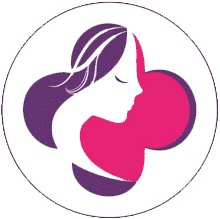High risk pregnancy
HIGH RISK PREGNANCY
HIGH RISK PREGNANCY
Pregnant women and their babies are at increased risk of health problems before, during and after delivery and special monitoring is needed throughout pregnancy.
Risk factors for a high-risk pregnancy?
- Advanced maternal age. i.e. mothers older than age 35.
- Lifestyle. Smoking, drinking and drug abuse.
- Medical history. Hypertension, diabetes, heart diseases, poorly controlled asthma, infections, and blood-clotting disorders increase pregnancy related risks.
- Surgical history. Multiple C-sections, multiple abdominal surgeries or surgery for uterine tumors (fibroids).
- Pregnancy complications. Abnormal placenta position, fetal growth restriction and Rh (rhesus) isoimmunization.
- Multiple pregnancy. In women carrying twins or higher order multiples, pregnancy risks are higher.
How can I promote a healthy pregnancy?
- Schedule a preconception appointment. With the very first thought of becoming pregnant, consult your gynecologist. She will counsel you to take daily vitamins with folic acid and reach a healthy weight even before you become pregnant. Any ongoing medical disease needs to be treated.
- Seek regular prenatal care. Antenatal visits help to monitor your and your baby’s health.
- Eat a healthy diet. Increase your folic acid, protein, calcium and iron.
- Gain weight wisely. Right amount of weight gain can support your baby’s health and makes it easier to shed the extra pounds after delivery.
- Avoid risky substances. Smoking, alcohol and drug abuse are to be avoided.
What special tests are needed?
- Specialized or targeted ultrasound. This type of fetal ultrasound is used to target a suspected problem and abnormal development.
- Amniocentesis. It is typically done after week 15 of pregnancy. A sample of amniotic fluid is withdrawn and sent for examination. It can identify certain genetic conditions and serious abnormalities of the brain or spinal cord.
- Chorionic villus sampling (CVS). Here, cells are taken directly from the placenta between 10 and 12 weeks of pregnancy.
- Cordocentesis. Baby’s blood is sampled from the umbilical cord for testing certain genetic disorders, blood conditions and infections.
- Ultrasound for cervical length. Done to measure the length of your cervix to determine the at risk of preterm labor.
- Lab tests. Routine blood tests and urine examination is adviced. Additional screening tests for infectious diseases such as HIV and syphilis are also required.
- Biophysical profile. It is used to evaluate fetal well-being.
What are the warning signs that I need to take care of?
- Vaginal bleeding
- Severe headaches
- Pain or cramping in the lower abdomen
- Watery vaginal discharge.
- Regular or frequent contractions.
- Decreased fetal movement.
- Pain or burning with urination
- Changes in vision, including blurred vision
Presence of these signs and symptoms warrant prompt action and emergency care.
The best possible way to promote a healthy pregnancy is to become responsible and stay aware of the warning signs and take immediate steps.











